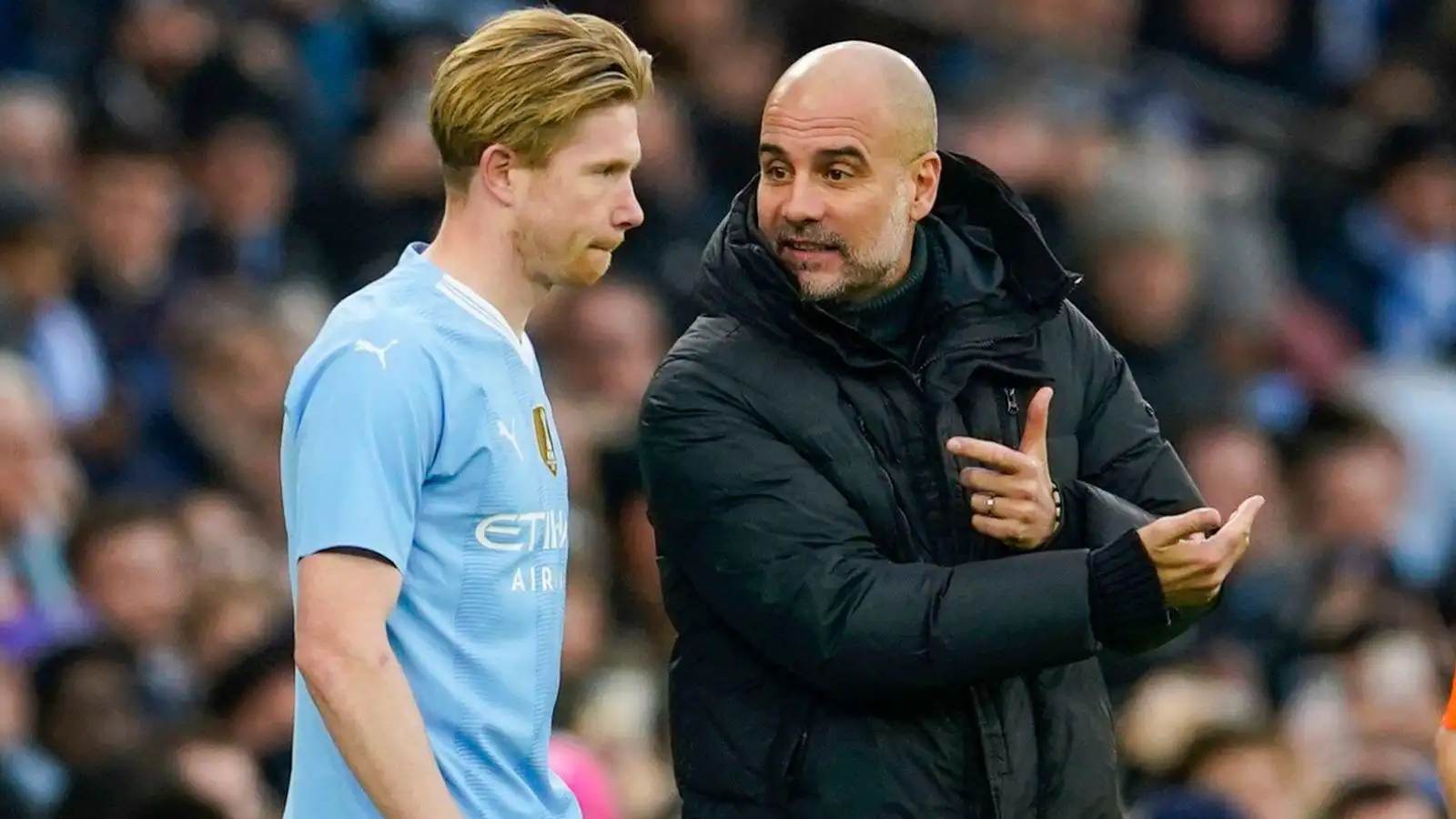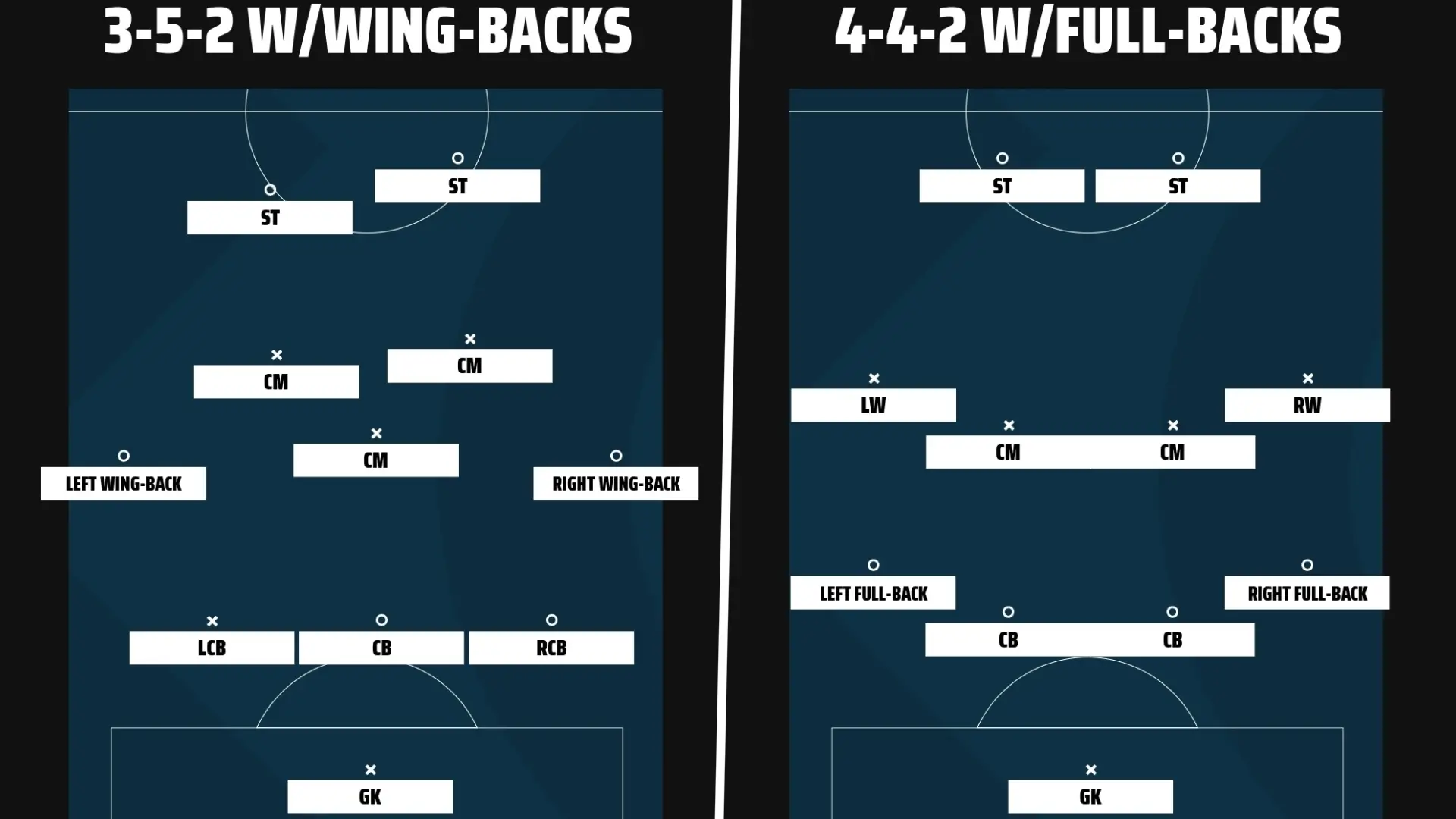Football Positions Explained: A Beginner’s Guide

Football is a complicated game where every player has a specific role that contributes to the team’s success. If you’re new to the beautiful game, this guide will break down football positions, their roles, and highlight examples of stand out players in each position. By the end, you will have a clear understanding of football positions explained, in simple terms. This is Football Poisitions Explained, by Football Insides.
Quick Navigation
Why Football Positions Explained?
At its core, football positions refer to the roles players take on the field. These positions are categorized into three main groups: defenders, midfielders, and forwards, with a goalkeeper as the last line of defense. Let’s explore these roles in detail, because there is much more than just these four categories. This is: Football Positions Explained by Football Insides.
Goalkeeper (GK): The Defensive Wall
The goalkeeper is the only player allowed to use their hands (within their penalty area). Their primary job is to stop the ball from entering the net.
Examples:
- Manuel Neuer (Bayern Munchen): Known for his “sweeper-keeper” style, where he often leaves the goal area to intercept passes and help his team higher up the pitch in ball possesion.
- Thibaut Courtois (Real Madrid): Known for his exceptional reflex saves and composure under pressure, this style if play is called a “line keeper”.

Defenders: The Backbone of the Team
Center-Backs (CB): Protecting the Centre of Defense
Centre-backs are tasked with stopping opposition attacks and maintaining the defensive structure. Some, like sweepers, focus on reading the game and cleaning up loose balls, operating slightly deeper to provide extra security. Others, such as positional defenders, excel in holding their line, intercepting passes, and using their tactical awareness to neutralize threats without engaging in unnecessary duels. Both styles are crucial in building a solid defensive foundation.
Examples:
- Virgil van Dijk (Liverpool): A master of positioning, Van Dijk rarely needs to sprint or slide tackle because he anticipates plays and positions himself perfectly to neutralize threats. His calm, calculated approach makes him unique.
- Dayot Upamecano (Bayern Munchen): Known for his raw speed and strength, Upamecano often relies on his athleticism to recover from defensive lapses, chase down attackers, or win physical duels. This high-energy style contrasts with Van Dijk’s composure.

Left/Right Back (LB/RB): Defenders on The Flanks
Full-backs operate on the wings in a 4-man defense, usually in a 4-3-3 or 4-4-2 formation, balancing defensive duties with offensive support.
Examples:
- Trent Alexander-Arnold (Liverpool): Famous for his crossing ability and creativity, Alexander-Arnold often acts as an additional midfielder, regularly contributing assists and creating chances from wide positions.
- Nuno Mendes (PSG): A more defensively robust left-back, Mendes is known for his quickness and ability to make overlapping runs. While he does get forward, his defensive awareness and solid positioning make him more balanced than a purely attacking full-back.
Wing-Backs (LWB/RWB): The Offensive Threat
Wing-backs are key players in formations like 3-5-2 or 5-3-2. Unlike traditional full-backs, they often act as wingers in attack, providing width and creativity. Wing-backs often play with 3 centre-backs behind them. Giving them more freedom to attack and less defensive responsibility. (We also made a blog for more knowledge on football formations)
Examples:
- Jeremie Frimpong (Bayer Leverkusen): Known for his pace and dribbling ability, Frimpong excels in pushing forward and creating chances in Leverkusen’s 3-5-2 formation, he is considered a more attacking wing-back.
- Denzel Dumfries (Inter Milan): A physically dominant wing-back, Dumfries combines strong defensive play and attacking intent, regularly contributing with assists from wide positions while using his speed and strength to stop opposition attackers.

Midfielders: The Team’s Engine
Central Defensive Midfielder (CDM): The Protector
Defensive midfielders or the “number 6” shield the defense and disrupt the opponent’s attacks.
Examples:
- Casemiro (Manchester United): A more traditional, combative CDM, Casemiro excels at breaking up opposition attacks with well-timed interceptions and tackles. His physicality and ability to shield the defense make him one of the top destroyers in midfield.
- Rodri (Manchester City): A playmaking CDM, Rodri is known for his exceptional passing and ability to control the tempo of the game, which traditionally is often done by the Central Midfielder. He plays a key role in transitioning the ball from defense to attack or from left to right, often making important passes that unlock opposition defenses.
Central Midfielder (CM): The All-Rounder
A central midfielder, “number 8” or “box to box midfielder” transitions the ball between defense and attack, dictating the pace of the game. Central midfielders are called “box to box” because they need to be able to come from their own 16 meter box to the oppositions 16 meter box, covering the whole field from defense to attack.
Examples:
- Toni Kroos (Retired): Known for his passing and vision, Kroos is a deep-lying playmaker who controls the tempo of the game. His exceptional long range passing and decision making allow him to dictate matches from the midfield, often setting up attacks.
- Frenkie de Jong (FC Barcelona): A more dynamic and ball-carrying midfielder, De Jong is known for his dribbling ability and intelligence in transition. Unlike Kroos, who focuses on distributing the ball from deep with passes, De Jong excels in driving forward and breaking lines with his dribbling, often linking defense and attack through his movement.
Central Attacking Midfielder (CAM): The Creative Masters
A attacking midfielder, or number 10, is the player responsible for creating chances and often play between the midfield and the forwards, making key passes or scoring goals.
Examples:
- Kevin de Bruyne (Manchester City): Known for his vision, creativity, and passing range, De Bruyne is a classic number 10 who controls the tempo in the final third. He excels at threading through balls, creating chances for teammates, and is crucial in build-up play, often making decisive assists.
- James Maddison (Tottenham Hotspur): A more goal-scoring number 10, Maddison is known for his ability to arrive in the box and finish chances. While he also has excellent vision and passing, his strength lies in making late runs into the penalty area and being in the right place to finish crosses or cutbacks, offering a more goal-scoring threat compared to De Bruyne’s playmaking role.

Forwards: The Goal Scorers
Wingers (LW/RW): The Pace and Precision
Wingers are the wide attackers who stretch the opposition, either by delivering crosses into the box or cutting inside to shoot or create chances.
Examples:
- Mohamed Salah (Liverpool): Known for his cutting-inside style, Salah is an inside-forward who operates on the right wing but predominantly uses his left foot to cut inside and shoot. His ability to create space with quick feet and make dangerous runs inside the box makes him a constant goal-scoring threat. This “inside-cutting winger” role is key to his success, as he often takes on defenders before unleashing shots.
- Leroy Sané (Bayern Munchen): A more traditional winger, Sané plays on the left flank, using his pace and left foot to deliver dangerous crosses into the box. His classic winger role involves staying wide and providing width, stretching the opposition to create space for crosses or cutbacks.
- Phil Foden (Manchester City): As a wide playmaker, Foden often operates on the left but is more fluid in his movement, drifting into central areas to dictate play. He combines excellent dribbling with vision and creativity, often making runs into the box and setting up goals while also being capable of scoring himself from various positions. A wide playmaker is more of a CAM placed on the wide position.
Striker (ST): The Team’s Finisher
For the last position in this blog; football positions explained, we target the striker position. Strikers play diverse roles depending on their style and team system, from pure goal-scoring to facilitating play for others.
Examples:
- Antoine Griezmann (Atletico Madrid): Griezmann excels as a false 9, often dropping into midfield to link up play and create chances for teammates. While he remains a goal-scoring threat, his intelligence and vision make him a hybrid between a playmaker and a forward. His ability to drift into pockets of space confuses defenders and opens up opportunities for his team.
- Erling Haaland (Norway): Haaland is the definition of a finisher. With his powerful runs, sharp positioning, and clinical touch, he focuses on getting into the box and converting chances. Whether it’s a one-touch finish or a towering header, Haaland is all about maximizing goal-scoring opportunities.
- Harry Kane (England): Kane is the perfect complete striker. His game combines intelligent movement, precise finishing, and the ability to drop deep to make the play. Kane’s mobility and versatility allow him to both score and create, making him a constant dual threat for defenders.

Conclusion of Football Positions Explained
Understanding the game starts with knowing the roles each player fulfills on the pitch. From the shot-stopping brilliance of goalkeepers to the tactical intelligence of center-backs, the creativity of midfielders, and the dynamic finishing of attackers, every position plays a vital role in shaping a team’s success. By diving into football positions explained, we hope we gave you a good understanding of the basics, to gain a deeper appreciation of the skills and strategies that define the beautiful game.
If you enjoyed this blog about football positions explained, let us know in the comments below or join the conversation on Instagram!

1 thought on “Football Positions Explained: A Beginner’s Guide”
Good blog thank you